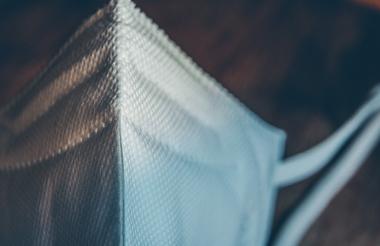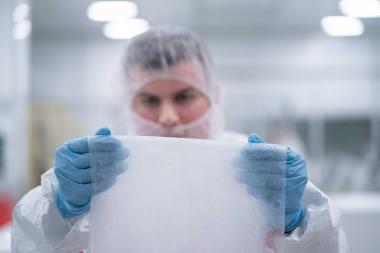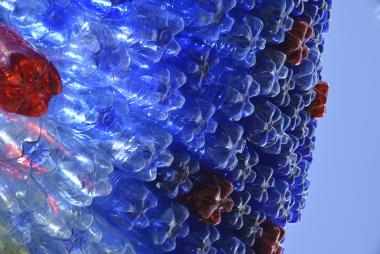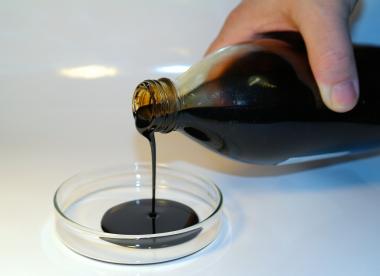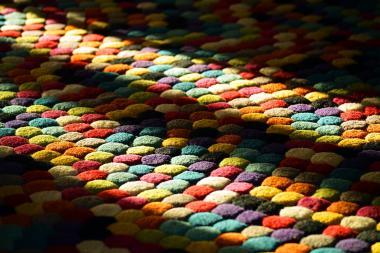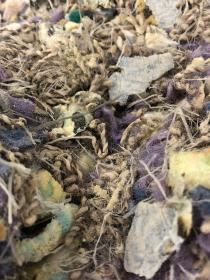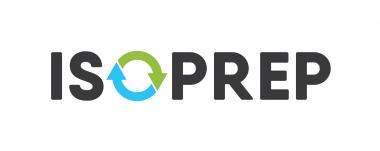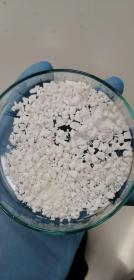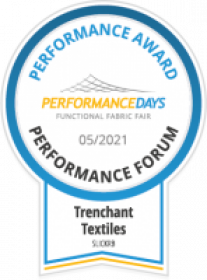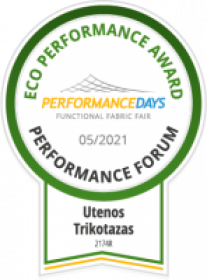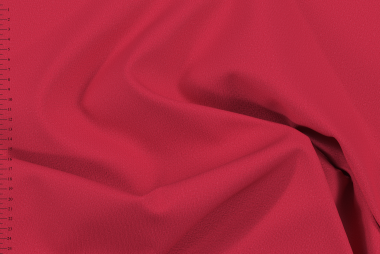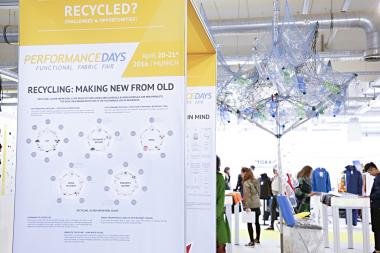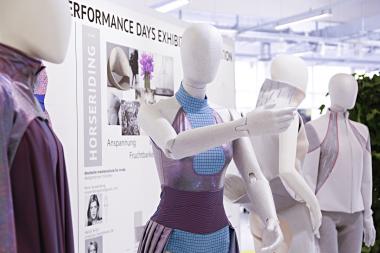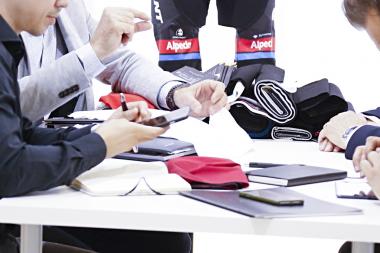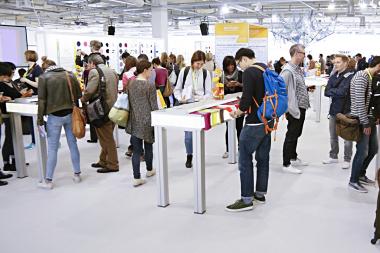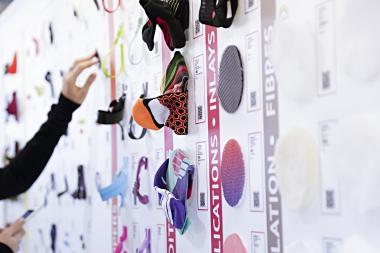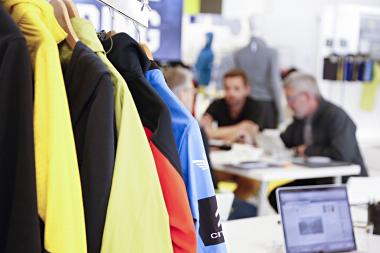Fraunhofer: Optimized production of nonwoven masks
Producing infection control clothing requires a lot of energy and uses lots of material resources. Fraunhofer researchers have now developed a technology which helps to save materials and energy when producing nonwovens. A digital twin controls key manufacturing process parameters on the basis of mathematical modeling. As well as improving mask manufacturing, the ProQuIV solution can also be used to optimize the production parameters for other applications involving these versatile technical textiles, enabling manufacturers to respond flexibly to customer requests and changes in the market.
Nonwoven infection control masks were being used in their millions even before the COVID-19 pandemic and are regarded as simple mass-produced items. Nevertheless, the manufacturing process used to make them needs to meet strict requirements regarding precision and reliability. According to DIN (the German Institute for Standardization), the nonwoven in the mask must filter out at least 94 percent of the aerosols in the case of the FFP-2 mask and 99 percent in the case of the FFP-3 version. At the same time, the mask must let enough air through to ensure that the wearer can still breathe properly. Many manufacturers are looking for ways to optimize the manufacturing process. Furthermore, production needs to be made more flexible so that companies are able to process and deliver versatile nonwovens for a wide range of different applications and sectors.
ProQuIV, the solution developed by the Fraunhofer Institute for Industrial Mathematics ITWM in Kaiserslautern, fulfills both of these aims. The abbreviation “ProQuIV” stands for “Production and Quality Optimization of Nonwoven Infection Control Clothing” (Produktions- und Qualitätsoptimierung von Infektionsschutzkleidung aus Vliesstoffen). The basic idea is that manufacturing process parameters are characterized with regard to their impact on the uniformity of the nonwoven, and this impact is then linked to properties of the end product; for example, a protective mask. This model chain links all relevant parameters to an image analysis and creates a digital twin of the production process. The digital twin enables real-time monitoring and automatic control of nonwoven manufacturing and thus makes it possible to harness potential for optimization.
Dr. Ralf Kirsch, who works in the Flow and Material Simulation department and heads up the Filtration and Separation team, explains: “With ProQuIV, the manufacturers need less material overall, and they save energy. And the quality of the end product is guaranteed at all times.”
Nonwoven manufacturing with heat and air flow
Nonwovens for filtration applications are manufactured in what is known as the
meltblown process. This involves melting down plastics such as polypropylene and forcing them through nozzles so they come out in the form of threads referred to as filaments. The filaments are picked up on two sides by air flows which carry them forward almost at the speed of sound and swirl them around before depositing them on a collection belt. This makes the filaments even thinner: By the end of the process, their thickness is in the micrometer or even submicrometer range. They are then cooled, and binding agents are added in order to create the nonwoven. The more effectively the temperature, air speed and belt speed are coordinated with each other, the more uniform the distribution of the fibers at the end and therefore the more homogeneous the material will appear when examined under a transmitted light microscope. Lighter and darker areas can thereby be identified — this is referred to by experts as cloudiness. The Fraunhofer team has developed a method to measure a cloudiness index on the basis of image data. The light areas have a low fiber volume ratio, which means that they are less dense and have a lower filtration rate. Darker areas have a higher fiber volume and therefore a higher filtration rate. On the other hand, the higher air flow resistance in these areas means that they filter a smaller proportion of the air that is breathed in. A larger proportion of the air flows through the more open areas which have a less effective filtration effect.
Production process with real-time control
In the case of ProQuIV, the transmitted light images from the microscope are used to calibrate the models prior to use. The experts analyze the current condition of the textile sample and use this information to draw conclusions about how to optimize the system — for example, by increasing the temperature, reducing the belt speed or adjusting the strength of the air flows. “One of the key aims of our research project was to link central parameters such as filtration rate, flow resistance and cloudiness of a material with each other and to use this basis to generate a method which models all of the variables in the production process mathematically,” says Kirsch. The digital twin monitors and controls the ongoing production process in real time. If the system deviates slightly from where it should be — for example, if the temperature is too high — the settings are corrected automatically within seconds.
Fast and efficient manufacturing
“This means that it is not necessary to interrupt production, take material samples and readjust the machines. Once the models have been calibrated, the manufacturer can be confident that the nonwoven coming off the belt complies with the specifications and quality standards,” explains Kirsch. ProQuIV makes production much more efficient — there is less material waste, and the energy consumption is also reduced. Another advantage is that it allows manufacturers to develop new nonwoven-based products quickly — all they have to do is change the target specifications in the modeling and adjust the parameters. This enables production companies to respond flexibly to customer requests or market trends.
This might sound logical but can be quite complex when it comes to development. The way that the values for filtration performance and flow resistance increase, for example, is not linear at all, and they are not proportional to the fiber volume ratio either. This means that doubling the filament density does not result in double the filtration performance and flow resistance — the relationship between the parameters is much more complex than that. “This is precisely why the mathematical modeling is so important. It helps us to understand the complex relationship between the individual process parameters,” says ITWM researcher Kirsch. The researchers are able to draw on their extensive expertise in simulation and modeling for this work.
More applications are possible
The next step for the Fraunhofer team is to reduce the breathing resistance of the nonwovens for the wearer without impairing the protective effect. This is made possible by electrically charging the fibers and employing a principle similar to that of a feather duster. The electric charge causes the textile fabric to attract the tiniest of particles which could otherwise slip through the pores. For this purpose, the strength of the electrostatic charge is integrated into the modeling as a parameter.
The Fraunhofer researchers’ plans for the application of this method extend far beyond masks and air filters. Their technology is generally applicable to the production of nonwovens — for example, it can also be used in materials for the filtration of liquids. Furthermore, ProQuIV methods can be used to optimize the manufacture of nonwovens used in sound-insulating applications.
Fraunhofer Institute for Industrial Mathematics ITWM


